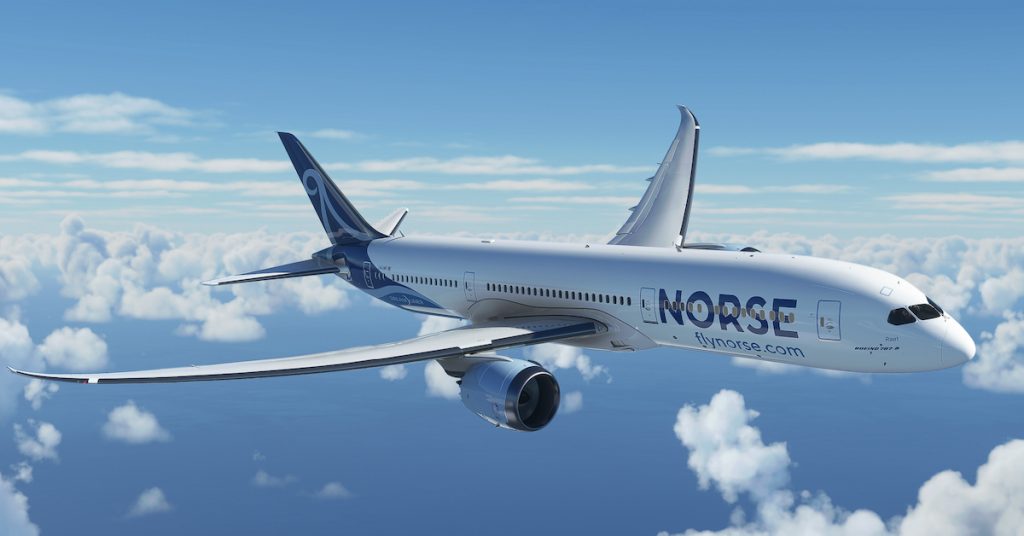Norse Atlantic Airways has announced a strategic decision to delay the full deployment of its fleet until summer 2025. This move is part of a cautious and measured strategy reflecting current market conditions.
Fleet Management Strategy
Norse Atlantic Airways, a key player in the affordable long-haul travel sector, is closely managing its fleet of Boeing 787 Dreamliners. Currently, the airline operates 12 out of its 15 aircraft, with plans to increase the fleet’s activity aligned with market demand and strategic goals.
This careful fleet management includes extending the sub-lease agreements for four of its Dreamliners. Three aircraft have their return dates extended by up to a year, while one will return earlier next year. This strategic move aims to optimise cash flow and operational readiness.
Market Conditions and Strategic Response
The decision to stagger the full fleet deployment is largely influenced by market conditions. Norse Atlantic is navigating a complex landscape where demand recovery is pivotal. The airline’s leadership is committed to scaling operations prudently, adapting to changes in market demands.
As founder and CEO Bjørn Tore Larsen reaffirmed, the airline aims for steady growth that matches market demand. Larsen’s approach highlights a focus on long-term sustainability over rapid expansion.
Sub-Lease Extensions
The existing leases, arranged at historically low prices in 2021, provide flexibility crucial for today’s market.
By extending sub-leases, Norse Atlantic is bolstering its financial position. This approach enhances cash profit during the extended periods, proving vital for fiscal stability.
Larsen commented on the potential for increased secured total cash profit thanks to these strategic extensions. This decision underlines the airline’s commitment to financial prudence and operational efficiency.
Plans for Future Expansion
Moving forward, Norse Atlantic aims to fully operate all 15 Dreamliners by 2025. This planned expansion is rooted in both current market analysis and projected future demand, ensuring readiness when conditions improve.
Norse Atlantic’s strategy remains customer-centric, focusing on expanding routes as demand rebounds. The airline continues to monitor external factors to inform its operational strategies.
The anticipated increase to a full fleet operation will align with broader industry recovery. This aligns with Norse Atlantic’s long-term vision and commitment to sustainable growth.
Financial Implications and Sustainability
The extension of sub-leases directly enhances Norse Atlantic’s cash flow. This strategy not only supports immediate financial health but also secures resources for future growth phases.
By maintaining flexibility in their operations, Norse Atlantic is well-placed to adapt to sudden market changes. This includes leveraging the financial benefits of their strategic lease agreements.
These financial strategies are essential in positioning Norse Atlantic favorably within the competitive airline industry. The focus on sustainability ensures the airline can navigate volatile markets effectively.
Leadership’s Vision
Bjørn Tore Larsen’s vision for Norse Atlantic involves cautious growth aligned with industry trends. This approach not only prioritises financial stability but also aims to meet future customer needs effectively.
The leadership’s focus on adapting to industry changes reinforces their strategic planning. This ensures Norse Atlantic remains competitive and relevant amidst evolving travel demands.
Conclusion
Norse Atlantic’s deliberate fleet management underscores its strategic focus on sustainable growth. By aligning operations with market trends, the airline positions itself for success in a recovering industry.
The foresight in financial planning and fleet management demonstrates Norse Atlantic’s commitment to long-term viability, marking a significant step in their journey towards full operational capacity.
In summary, Norse Atlantic Airways’ strategy of cautious fleet deployment and financial prudence positions the airline for future growth. This approach ensures readiness for market recovery and long-term success.

